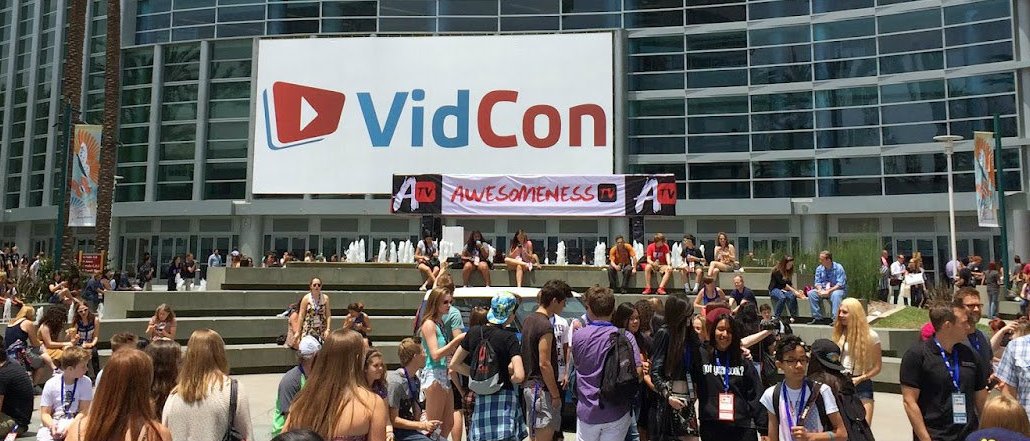Register by Jan 13 to save on passes and connect with marketers from Uber, Bose and more

For advertisers and media companies, the clarion call of YouTube and its community of creators to attend an annual convention called VidCon has become deafening. It’s important, they say. It perfectly captures what kids today are engaging with, they say. If you don’t come, you risk being left behind, they warn.
And yet, even as interest in the event grows among advertisers and media companies, there still seem to be many people who have no clue what VidCon is. Which is surprising, considering the fact that the convention is expected to attract more than 21,000 attendees this year.
Admittedly, the number of industry-types unaware of VidCon is getting smaller. YouTube, for instance, is bringing 100 of its top advertisers to this year’s event as part of an organized introduction (or reintroduction) to the community.
“If your brand is creating video content, thinking of using influencers or exploring content strategy across platforms — and I can’t think of many brands that wouldn’t answer yes to at least one of those — then [VidCon] is a must-attend event,” said Tiffany Winter, senior director of business development and strategic partnerships at Mindshare Content+ and Entertainment.
A three-day celebration of all things online video.
The most common reference point for VidCon is that it’s like a “Comic-Con” for online video stars and their fans. The convention was launched in 2010 by brothers Hank and John Green, both prominent YouTube vloggers, to offer a place for emerging online video stars to meet and discuss the emerging business of online video, as well as interact with their biggest fans. The event quickly expanded to become a large celebration of online video, with each VidCon featuring industry- and fan-centric panel sessions, signings, screenings, concerts and all sorts of weird activations (one year, in honor of “Shark Week,” Discovery brought a giant mechanical shark and invited creators and fans to crush whatever small items they wanted in its jaws).
Lots of screaming teenagers.
Most people who attend VidCon are very young and very loud. Don’t believe us? Watch this video, which follows YouTuber Kian Lawley as he walks across the convention center on one of its quieter days:
It was a YouTuber convention initially; now it’s bigger.
VidCon celebrates all of Web video. For a long time, that meant just YouTube. Not anymore.
Whether you’re a YouTube star, brand or media company, there are a lot more legitimate distribution options available today than there were even 12 months ago. Facebook, Vimeo and Vessel are just a few that come to mind, and more are on their way. That’s a tricky landscape VidCon aims to help attendees navigate.
“It’s an opportunity to be a part of the current conversations happening around what is working, and more importantly, what isn’t,” said Winter. “Navigating the changing landscape of content platforms provides new and unexpected challenges. The best thing for a brand is to be armed with knowledge to find the right path for them.”
Brands and media companies are taking notice.
Since its still relatively new, VidCon is not a tentpole event yet for most advertisers and media companies, according to Rich Raddon, co-founder and co-CEO of Zefr, which helps advertisers and media companies with their YouTube marketing and monetization strategies. But it should be. “It took years for media companies to wake up and embrace Comic-Con,” said Raddon. “I don’t think it will take as long for VidCon to gain that attention. Some brands have been quick to embrace the event.”
This year’s major brand sponsors include Kia, Taco Bell, Best Buy, Panasonic and Canon. Others including Marriott, Purina and L’Oréal Paris are scheduled to speak on panels. In fact, interest is strong enough — three times as much as in previous years — that one out of every three panels on the industry track will be geared toward advertisers and media companies, Louderback said.
“If you aren’t convinced of YouTube’s ability to drive purchasing or generate loyal audiences, just spend some time on the first floor of the event hall and witness what it’s like to be a fan,” said Raddon.
“Once you see it, you will get it,” said Louderback. “It’s the mania of online video.”
Top image via Manatt Digital Media; homepage via Allen J. Schaben / Los Angeles Times
More in Media

Why publishers are building their own creator networks
Publishers are forming creator networks to regain control, combat traffic declines, and reach audiences shifting toward influencers.

The accidental guardian: How Cloudflare’s Matthew Prince became publishing’s unexpected defender
Cloudflare’s day job is fending off botnets and nation-state cyberattacks, not debating how Google and other AI firms crawl publisher sites.

A timeline of the major deals between publishers and AI tech companies in 2025
Here’s a list of all the major deals signed between publishers and AI tech companies in 2025.





